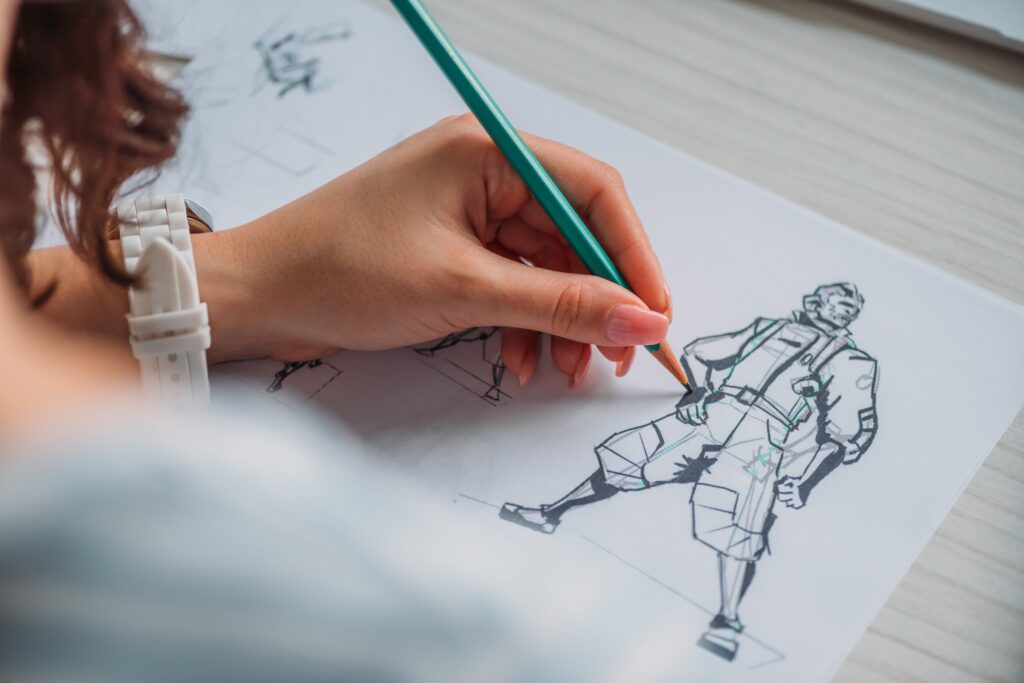In the dynamic world of animation, the art of character stylization plays a crucial role in bringing characters to life on screen. Whether it’s in feature films, television shows, video games, or advertisements, animated characters need to be visually appealing and engaging to capture the audience’s attention.
The process of creating unique and stylized characters involves a blend of creativity, technical skills, and a deep understanding of character design principles.
1. Character Designer
Character designers are responsible for creating the initial concept art for animated characters. They develop the visual appearance, personality, and overall style of the characters based on the project’s requirements.
Character designers must have a strong foundation in drawing, illustration, and storytelling to effectively communicate the character’s traits through their design.
2. 3D Modeler
3D modelers bring character designs to life in the digital realm by creating detailed 3D models of the characters. Using specialized software like Maya or Blender, 3D modelers sculpt the characters in three dimensions, adding textures, colors, and intricate details to enhance their appearance. Attention to detail and a strong understanding of anatomy are essential skills for 3D modelers.
3. Texture Artist
Texture artists specialize in adding surface detail and textures to 3D models to make them look more realistic and visually appealing. They work closely with 3D modelers to apply textures like skin, fur, clothing, and props to the characters, creating a sense of depth and realism.
Texture artists must have a keen eye for detail and a good understanding of color theory to create cohesive and visually striking textures.
4. Rigging Artist
Rigging artists play a crucial role in giving animated characters the ability to move and emote convincingly. They create digital skeletons, known as rigs, that control the movement of the characters’ limbs, facial expressions, and other features.
Rigging artists need a solid understanding of anatomy, physics, and animation principles to ensure that the characters move realistically and expressively.
5. Animator
Animators breathe life into animated characters by bringing them to motion. They create movement sequences, gestures, and expressions that reflect the character’s personality and emotions.
Animators use keyframe animation or motion capture techniques to animate characters, requiring a strong grasp of timing, spacing, and acting principles to convey believable performances.
6. Concept Artist
Concept artists work closely with the creative team to develop visual concepts and designs for characters, environments, props, and visual effects. They create sketches, mood boards, and color studies to explore different artistic directions and establish the visual style of the project.
Concept artists need strong drawing and painting skills, as well as the ability to work collaboratively and adapt to feedback.
7. Art Director
Art directors oversee the artistic vision and style of an animated project, ensuring that the visuals are cohesive, engaging, and aligned with the creative direction. They work closely with the production team, including character designers, animators, and visual effects artists, to maintain a consistent visual aesthetic throughout the project.
Art directors need strong leadership skills, creative vision, and a deep understanding of design principles.
8. Visual Development Artist
Visual development artists are responsible for creating the overall look and feel of an animated project, including the characters, environments, and color schemes. They develop concept art, color scripts, and visual mood boards to establish the visual direction and style of the project.
Visual development artists must have a strong sense of design, storytelling, and visual communication to create compelling and immersive worlds.
9. Storyboard Artist
Storyboard artists play a vital role in translating scripts and ideas into visual sequences that serve as blueprints for the animation process. They create rough sketches and storyboards that outline the key moments, compositions, and camera angles of a scene, helping to plan the pacing and visual storytelling of the project.
Storyboard artists need strong drawing skills, narrative abilities, and a good understanding of cinematic language.
10. Character Animator
Character animators specialize in bringing animated characters to life through movement and performance. They create expressive poses, gestures, and actions that convey the character’s personality, emotions, and motivations.
Character animators work closely with directors, animators, and rigging artists to ensure that the character’s movements are fluid, natural, and engaging.
Conclusion
In the competitive and ever-evolving animation industry, mastering the art of character stylization is essential for aspiring animators and artists.
By developing a strong foundation in character design principles, drawing skills, and digital tools, you can unlock a world of creative possibilities and bring your animated characters to life with style and personality.
Key Takeaways:
- Character stylization is a vital aspect of animation, influencing the visual appeal and engagement of animated characters across various media platforms.
- Roles such as character designers, 3D modelers, texture artists, rigging artists, animators, concept artists, art directors, visual development artists, storyboard artists, and character animators are key in creating compelling animated characters.
- Developing a strong foundation in drawing, illustration, storytelling, anatomy, and digital tools is essential for aspiring animators looking to excel in character stylization.
- Mastering the art of character stylization opens up diverse career opportunities in feature films, television shows, video games, and advertising within the competitive animation industry.
For those looking to enhance their skills and knowledge in animated character stylization, consider enrolling in the NYU Animation Industry Essentials online course and certificate program offered by Yellowbrick.
This comprehensive program can provide valuable insights and practical training to help you succeed in the exciting world of animation.








